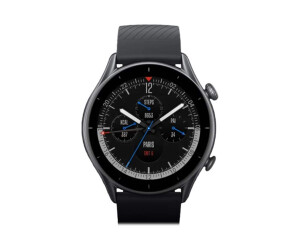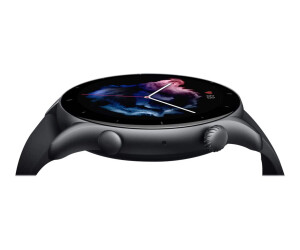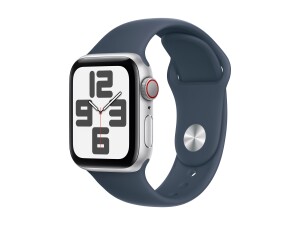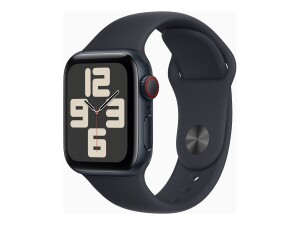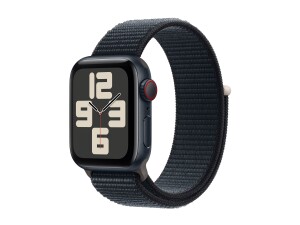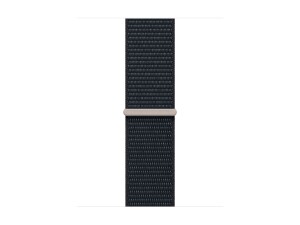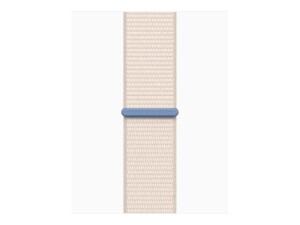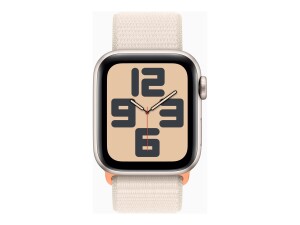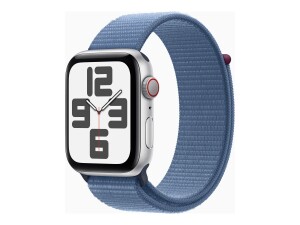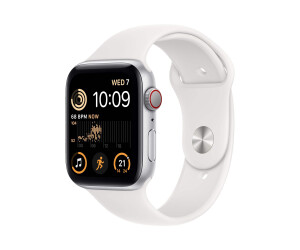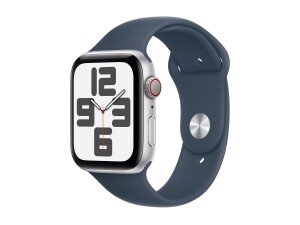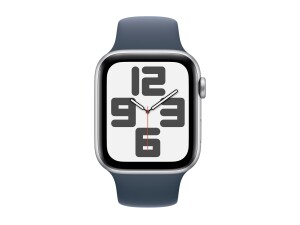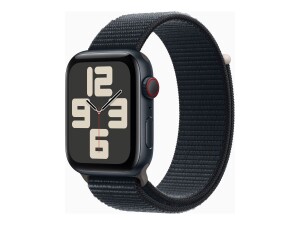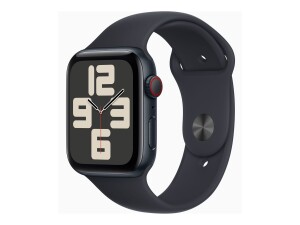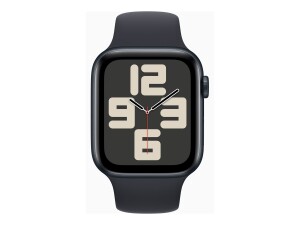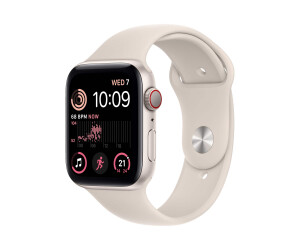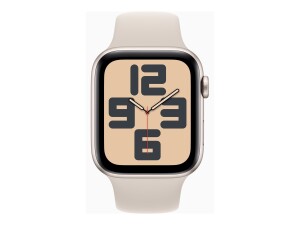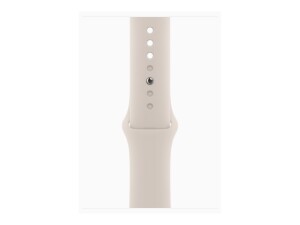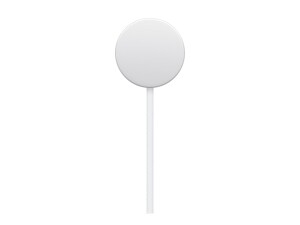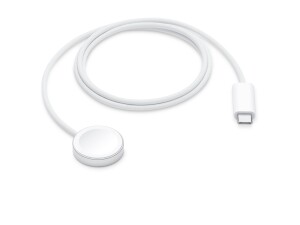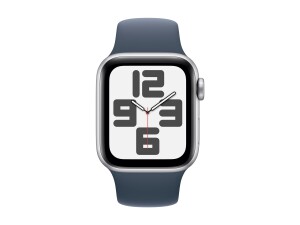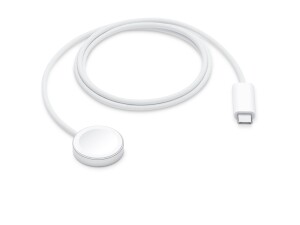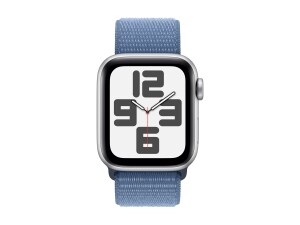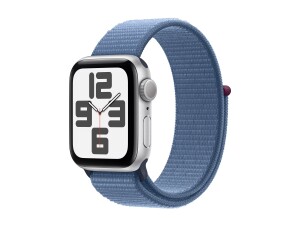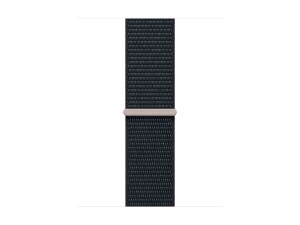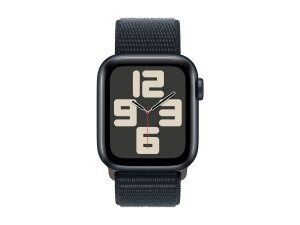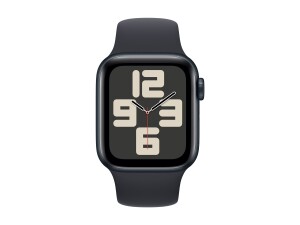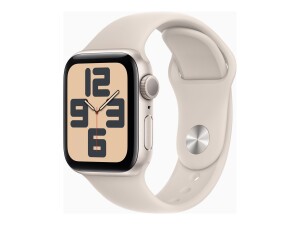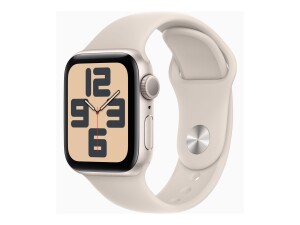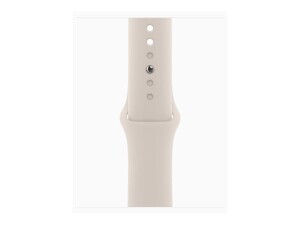- /
- Computersystems
- /
- Smartwatches
Smartwatches
Smartwatches
A smartwatch is a digital wristwatch that has a variety of features beyond just displaying time. These devices connect wirelessly to a smartphone or other device, providing additional functions such as receiving notifications, tracking fitness goals, and controlling music and media playback.
The smartwatch is one of the latest developments in wearable technology and has quickly become an essential gadget for people who are constantly on the go and don't always have their smartphones at hand. They can be used to make and receive calls, send and receive text messages, and open various apps installed on the paired device.
Most smartwatches have a color display and are usually equipped with a touchscreen. The display can show the time and other information, such as weather, step counts, and calorie consumption, and apps can also be customized to display specific information. There is a wide range of designs and shapes, some of which look more like traditional watches, while others look more like technical devices.
Some of the useful features of smartwatches include the ability to receive notifications from your phone directly on your wrist, which is particularly convenient when you're on the go or don't have your phone at hand. You can also answer or reject calls without having to take the phone out of your pocket or backpack. Additionally, there are numerous apps for smartwatches that can help you achieve your fitness goals, such as counting steps, monitoring your heart rate, or tracking your workouts.
Another advantage of smartwatches is their compatibility with other devices and services. For example, they can be paired with a smart speaker to play music or control the lights in a room. They can also be used for mobile payments, thus replacing a credit or debit card. Some smartwatches even have GPS and mapping capabilities, allowing you to navigate on the go without having to use your smartphone.
Compatibility:Compatibility refers to whether a specific smartwatch is compatible with the operating system and smartphone that a consumer already owns. It's important to note that not all smartwatches are compatible with all smartphones or operating systems. Before a consumer purchases a smartwatch, they should ensure that the one they choose is compatible with their smartphone. If the smartwatch is not compatible with the smartphone, it won't be able to sync with the phone to display or control notifications, calls, music, and other functions. Therefore, a consumer should carefully check compatibility before buying a smartwatch to ensure that it works fully and provides the desired features.
Connectivity:Connectivity refers to how a smartwatch is connected to other devices or the internet. Most smartwatches are connected to a smartphone via Bluetooth to display or control notifications, calls, music, and other functions. This connection is wireless and typically requires a brief pairing between the two devices.
However, some smartwatch models also offer Wi-Fi connectivity to establish a direct connection to the internet without requiring a smartphone. This allows users to download apps, stream music, and use other functions independently of a smartphone.
Some smartwatch models also have a built-in SIM card, which allows for an independent internet connection and direct calls and messages from the smartwatch without the need for a nearby smartphone. This type of connectivity is called "eSIM" and allows users to use the smartwatch completely independently of a smartphone.
The choice of connectivity depends on the user's needs, whether they require complete independence from a smartphone or prefer a connection to a smartphone.
Operating Systems:Operating systems are the software platforms on which a smartwatch operates. There are different operating systems developed for smartwatches, including watchOS for the Apple Watch, Wear OS for Android-based smartwatches, and Tizen for Samsung smartwatches.
watchOS is the operating system for the Apple Watch, exclusively developed for Apple products. It provides seamless integration with other Apple products and services, including Siri, Apple Music, and Apple Pay. The user interface is designed to be simple and intuitive, allowing users to quickly access their favorite apps, notifications, and other functions.
Wear OS is the operating system for Android-based smartwatches, developed by Google. It offers a wide range of features and applications, allowing users to create personalized watch faces, widgets, and quick access to their favorite apps. It is also integrated with Google Assistant to enable voice commands and seamless integration with other Google services such as Google Maps and Google Pay.
Tizen is the operating system for Samsung smartwatches, developed by Samsung itself. It offers a user-friendly interface and a wide range of features, including fitness tracking and smartphone notifications. Tizen also allows for seamless integration with other Samsung products and services such as Samsung Health and Samsung Pay.
The choice of operating system depends on the user's individual preferences, including integration with other devices and services, the availability of applications, and the user-friendliness of the user interface.
Display Technology:The display technology is an important aspect to consider when choosing a smartwatch. Most smartwatches use either LCD or OLED displays.
LCD displays (Liquid Crystal Display) are common in many smartwatches and offer good brightness and color reproduction. However, LCD displays also have some disadvantages, such as poor black levels, which means they struggle to display true black, which can be a nuisance when displaying dark content like in night modes or watch faces.
OLED displays (Organic Light Emitting Diode) offer excellent black levels and better color reproduction than LCD displays. This technology is often used in high-end smartwatches and can also be used on round watches due to its flexible properties. However, OLED displays also have higher costs and may perform slightly weaker in displaying bright content and fast movements.
Another important display technology in smartwatches is the always-on function, which ensures that the display remains on continuously to provide quick information at all times. Some smartwatches have always-on displays that can affect battery life, while others use special technology that activates the display only when needed to save battery.
Overall, the choice of display technology depends on the individual user's requirements, including desired color reproduction, contrast, brightness, battery life, and always-on function.
Design and materials:The design and materials of smartwatches are important factors to consider when choosing a smartwatch. Most smartwatches are available in various designs and materials to meet the individual needs and preferences of users.
Some smartwatches have a sporty design and come with silicone straps that are durable and sweat-resistant, making them perfect for activities like running or fitness. Other smartwatches have a more elegant design and come with leather or metal straps that are perfect for formal occasions.
Aspects such as scratch resistance, durability, and water resistance should also be considered when choosing the material. Some smartwatches have a plastic case that is lightweight and sturdy, while others have a stainless steel or titanium case that is more durable and resistant.
In addition, there are smartwatches equipped with interchangeable straps that allow users to change and customize the appearance of the smartwatch as needed.
The design and materials of a smartwatch can have a significant impact on style and user experience. Therefore, it is important to choose a design and material that meets individual needs, requirements, and preferences.
Security:Security is an important aspect when using smartwatches, as they are often connected to personal data such as health and fitness data, contacts, and payment information. Therefore, it is important for smartwatches to have security features in place to protect this data.
One way to increase the security of smartwatches is by using passwords, PIN codes, or patterns to restrict access to the device. Some smartwatches also have fingerprint sensors or facial recognition to make access even more secure.
Another important security feature of smartwatches is the ability to lock or erase the watch in case of loss or theft. These features can be activated through the accompanying app or operating system to ensure that the data on the smartwatch does not fall into the wrong hands.
Overall, it is important for smartwatches to have sufficient security features to protect personal data. Users should always ensure that their smartwatch is secured with a secure password or other security feature and utilize all available security features to ensure the safety of their data.
Storage:Storage is an important factor when choosing a smartwatch. Most smartwatches have limited internal storage, as they are primarily intended to be an extension of the smartphone and perform only certain functions. This internal storage is typically used for apps, music, photos, and other data.
However, there are also some smartwatches that have the ability to insert a microSD card to expand storage. This is particularly useful when the smartwatch is used for storing music or running apps without a smartphone connection.
It is important to note that the available storage also depends on the size of the apps and music that are to be installed on the smartwatch. Some smartwatches may also have cloud storage, which allows users to store their data on external servers.
Overall, storage on smartwatches is limited, so it is important to consider the available storage in advance and ensure that it meets individual requirements and needs.
Data Encryption:Data encryption is an important security aspect of smartwatches. Data stored on the smartwatch is encrypted to ensure that it can only be read by authorized users. This means that if a person loses or has their smartwatch stolen, the data stored on the smartwatch remains secure and protected, as it can only be decrypted by authorized individuals.
Strong data encryption can also prevent third parties from intercepting or stealing data on the smartwatch. This is important because smartwatches often contain personal and sensitive data, such as health and fitness data, contacts, and payment information.
To ensure that data encryption on the smartwatch is strong, users should choose smartwatches that use modern encryption technologies like AES-256. This encryption technology is one of the strongest and most secure encryption standards and is used by governments and organizations worldwide.
It is also important to ensure that data encryption is regularly updated to respond to new threats and security vulnerabilities. Users should ensure that their smartwatch is always up to date and install all available security updates to ensure that their data is always protected.
Automatic LockingAutomatic locking is an important feature for the security of smartwatches, which prevents unauthorized access to the data on the smartwatch. When the smartwatch is not used for a certain period of time, it is automatically locked and can only be unlocked when the user enters authorization such as a password, PIN, or fingerprint.
This feature is particularly important for users who often leave their smartwatches unattended, such as during sports activities or in public. Automatic locking also helps to extend the battery life of the smartwatch by preventing unnecessary applications from running in the background when the watch is not in use.
Most smartwatches offer an automatic lock function that can be configured by the user to define the duration of inactivity before the watch is automatically locked. Some smartwatches also have more advanced locking features, such as the ability to automatically lock the watch when it is out of range of the connected smartphone. This increases security and prevents the smartwatch from being stolen or used by other users when it is not near the owner.
Two-factor authenticationTwo-factor authentication (also known as 2FA) is a method for increasing security when accessing a device or application by adding an additional layer of verification. In the case of smartwatches, this can mean that users have to use a biometric identification such as fingerprint, facial recognition, or iris scan, or a confirmation via SMS, in addition to their password or PIN, to access the smartwatch.
By using two-factor authentication, the security of the smartwatch is improved, as it becomes more difficult for potential attackers to access the smartwatch even if they know the password or PIN. This is especially important as smartwatches are often connected to personal and sensitive data such as health information, financial data, and personal contacts.
However, it should be noted that two-factor authentication can make it difficult to use the smartwatch and may be inconvenient for some users. Therefore, not all smartwatch models offer this feature, and some users may choose not to use it.
GPS location trackingGPS location tracking is a feature that is available in some smartwatches, allowing users to determine the exact position of their smartwatch. This feature can be useful for finding lost or stolen smartwatches. GPS location tracking features can also be useful for sports activities such as running, hiking, or cycling, to track the distance traveled and measure the speed, calorie burn, and distance covered.
GPS location tracking works by the smartwatch receiving a signal from satellites in orbit and using this information to determine its exact position on the Earth. However, this feature can increase the battery consumption of the smartwatch and should only be activated when needed. Some smartwatches also offer features such as live tracking, allowing users to track the position of friends or family members in real-time if they are also wearing a GPS-enabled smartwatch.
It is important to note that the GPS location tracking function is not always accurate and can be affected by obstacles such as buildings, trees, or bad weather. Therefore, it should not be used as the only method for determining location, especially in emergencies.
Security updates:Security updates are important aspects of smartwatch security. It is inevitable that every operating system or app has vulnerabilities that can be exploited by cyber criminals. Regular security updates are therefore an important factor in fixing these vulnerabilities and increasing the security of smartwatches.
Smartwatch manufacturers usually release regular updates to fix known vulnerabilities and add new features. It is therefore important for users to regularly update their smartwatches to benefit from these updates and keep their smartwatches up to date.
Most smartwatches have an automatic update function that allows the device to download and install updates automatically as they become available. However, it is advisable to regularly manually check for available updates to ensure that the smartwatch is always up to date.
By regularly updating smartwatches, the latest security features and improvements can also be implemented to ensure the security of the smartwatch and the data stored on it.
Water resistance:The water resistance of a smartwatch is an important aspect that may be important for certain user groups. Some smartwatches are completely waterproof and can even be used for swimming or diving, while others are only splash-proof and therefore not suitable for longer diving sessions. For athletes who spend a lot of time outdoors, the water resistance of the smartwatch may be important to ensure that it can be used easily even in the rain or when sweating. Water resistance can also be important for people who spend a lot of time at the beach or by the pool to ensure that their smartwatch is not damaged.
Battery life:Battery life is an important aspect of using smartwatches. It depends on various factors such as the model, display size, and usage. While some models only last a few hours, other models can be operated for several days without needing to be charged. Battery life also depends on the type of usage, such as using GPS or continuous connection to the smartphone. Long battery life is particularly important for athletes or people who spend a lot of time outdoors and do not always have a charging option nearby. It is advisable to keep an eye on the smartwatch's battery life and to have a power bank or charging option nearby if necessary to ensure that the smartwatch is always ready for use.
Voice control:Voice control is a feature that allows users to control their smartwatch using voice commands. Most smartwatches use voice recognition technologies that allow them to understand and implement spoken commands. Voice control can help users access their smartwatches when their hands are full or when they are in a situation where they are unable to tap or swipe on the display. Additionally, voice control can be a helpful feature for people with limited fine motor skills or visual impairments.
Fitness and health functions:Smartwatches can offer a variety of fitness and health functions that help promote a healthy lifestyle. These include, for example, pedometers that record the number of steps and thus measure daily activity. A heart rate monitor can measure heart rate, which is particularly useful when monitoring workouts or during exercise.
In addition, many smartwatches offer sleep monitoring functions that can measure and analyze sleep quality. This allows the user to improve their sleep habits and plan adequate rest periods.
Some smartwatches also have nutrition trackers that help the user monitor their eating habits and track their calorie consumption. This way, users can optimize their nutrition and maintain a balanced diet.
Fitness and health functions are particularly important for people who lead an active life and want to keep an eye on their health.
Voice and text messages:The function of sending and receiving voice and text messages directly from the smartwatch allows the user to quickly and conveniently respond to incoming messages without having to pick up the smartphone. This is particularly useful in situations where the smartphone is not at hand or when it is difficult to access the smartphone, such as during sports or work. Another option is to use voice control to compose voice or text messages. Smartwatches with this function can therefore be a practical and efficient alternative to the smartphone.
Music playback:Smartwatches often offer the possibility to play music directly from the watch without the need for a smartphone. Some models have internal memory onto which music tracks can be downloaded, while others can access the user's music library through a connection to the smartphone. Some smartwatches also allow music to be controlled by voice command or to create playlists directly from the watch. This function can be useful for listening to music during exercise without having to carry a separate device.
NFC support:Near Field Communication (NFC) is a wireless technology that allows devices to communicate with each other when they are in close proximity. Some smartwatches offer NFC support, which means they can communicate with NFC readers to enable, for example, payments or access to certain locations. NFC-enabled smartwatches can also be used for other purposes, such as transferring files or triggering actions on other devices that are also NFC-enabled.
Touchscreens:A touchscreen is a type of display that allows users to input and execute commands by touching the screen. In smartwatches, the touchscreen is often the primary method of navigation and interaction with the watch.
Most smartwatches have a color display that allows for a clear and detailed display of notifications, apps, and other content. The touchscreen also allows users to navigate menus, open apps, make or receive calls, send text messages, and use other features of the watch.
There are different types of touchscreens used in smartwatches, including capacitive and resistive touchscreens. Capacitive touchscreens are the most commonly used and respond to light touches on the screen through electrical signals in the user's finger. Resistive touchscreens are less common and typically require more pressure on the screen to register inputs.
Most smartwatch touchscreens also come with gesture control, allowing users to quickly navigate through menus and perform certain functions by simply tapping, swiping, or dragging on the screen.
Applications:Smartwatches have a wide range of applications and can be used in many different areas. Here are some of the main application areas of smartwatches:
- Fitness and Health: One of the main applications of smartwatches is tracking fitness and health data. Most smartwatches have built-in sensors that can measure your heart rate, steps taken, and calories burned. They can also monitor data such as sleep quality and stress levels. This information can help improve overall fitness and health.
- Communication and Notifications: Smartwatches can also serve as an extension of your smartphone. You can receive notifications, calls, and text messages on your wrist without having to pull out your phone. You can also make calls and send messages when you don't have your phone with you.
- Navigation: Some smartwatches have GPS and mapping capabilities that can help you find your way when you're on the go. They can also be used as a navigation aid when driving or cycling.
- Entertainment: Smartwatches can also be used to play music and control media on your smartphone. They can also be connected to streaming services like Spotify and Apple Music.
- Work and Productivity: Smartwatches can also be useful in the workplace for managing notifications and reminders and keeping track of schedules and calendar events. They can also be used as a remote control for presentations or as a clock and alarm function.
- Safety: Some smartwatches have features like emergency contacts and GPS tracking that can be useful in emergency situations. They can also be used as a remote control for the security cameras in your home.
As with any technology, smartwatches have both advantages and disadvantages. Here are some of the most important pros and cons of smartwatches:
Advantages:- Convenient operation: Having a smartwatch on the wrist allows for convenient and fast operation without having to take the smartphone out of the pocket.
- Health monitoring: Most smartwatches have integrated sensors for monitoring health and fitness data, which can help promote a healthy lifestyle.
- Notifications: Notifications, calls, and messages can be received directly on the wrist, minimizing phone checking and saving time.
- Personalization: Smartwatches offer a variety of customizable features and settings to meet the user's needs and preferences.
- Multifunctionality: Smartwatches offer a wide range of functions, including communication, navigation, music playback, reminders, and much more.
- Mobility: Since smartwatches are worn on the wrist, they allow for high mobility and freedom of movement compared to a smartphone.
- Facilitation of daily tasks: Smartwatches can help facilitate everyday tasks such as paying at the checkout or opening doors when equipped with the appropriate technology.
- Water resistance: Many smartwatches are waterproof and can even be worn while swimming or diving.
- Stylish accessory: Smartwatches can also be worn as a stylish accessory to complement the outfit.
- Dependence on the smartphone: In most cases, smartwatches depend on a smartphone to fully function. Without a smartphone nearby, many functions cannot be used.
- Battery life: Most smartwatches have limited battery life and need to be charged daily.
- Small display: The small display of a smartwatch can limit usability, especially when it comes to displaying longer texts or graphics.
- Limited apps: The selection of apps on smartwatches is limited compared to smartphones, which limits their possible uses.
- Price: Smartwatches can be expensive and may not be affordable for everyone.
- Privacy: The use of smartwatches can pose potential privacy risks, especially when they collect and store data.
- Distraction: Smartwatches can also distract and impair concentration on tasks, especially when notifications come in during important meetings or conversations.
- Health risks: The electromagnetic fields (EMF) emitted by smartwatches and other wearable devices can pose potential health risks, although no conclusive evidence exists.
- Limited interaction: Since smartwatches have a smaller display and limited interaction compared to smartphones, they may be less suitable for some applications or tasks.
Overall, smartwatches offer many advantages and disadvantages that should be considered when deciding whether to buy one. It is important to consider individual needs and preferences to determine whether a smartwatch is suitable for you. Overall, smartwatches are versatile and practical devices that are particularly useful for people who lead an active lifestyle or are frequently on-the-go. They are also a good choice for people looking for a compact and portable alternative to a smartphone or tablet. Although they may not be suitable for everyone, they have definitely found their place in the modern world and are a technology that continues to evolve rapidly. Overall, smartwatches offer a convenient and versatile technology that provides a wide range of functions. However, their limitations and disadvantages should be considered before purchasing a smartwatch. Overall, there are many applications for smartwatches, and their use depends on individual needs and preferences. They are a versatile and practical technology that can simplify life in many different areas.

